Container Gardening Ideas for Vegetables
This is a series of the same title, with each part featuring a vegetable.
Part 1: PAPAYA
I’d like to eat papaya all year round because it is yum, improves my skin and eyesight, and it’s an effective remedy to constipation, especially my daughter’s. However, I have a small yard, and worse, many parts of the yard floods. Hence, I have no choice but grow papayas in containers. The lack of space is a common problem to urban dwellers.
At the same time, there are many who are not in tropical and sub-tropical environments, yet, they’d like to eat papaya.
In this blog, I’ll share helpful authoritative materials, cases of home growers who’ve grown papayas in containers, and lessons, both mine and others’, gained from these experiences of growing papaya at home in containers and in cold/desert environments.
Authoritative Materials
First off, I strongly suggest to use the two articles below teaching the basics of growing papaya at home and in container, if you’re in a tropical environment. Otherwise, the third and fourth articles are must-reads if you are in a cold environment.
The University of Florida Institute of Food and Agricultural Sciences (UF/IFAS) documented “Papaya Growing in the Florida Home Landscape“. I think this is awesome because this is the only .edu article I’ve read that recognizes that people are really growing food in their homes, and instructs us in this context. In this article, they teach the following:
-
- Description, which includes Tree and Tree Types, Leaves, Flowers, Fruit, Pollination;
-
- Varieties;
-
- Climate;
-
- Propagation
-
- Production (Crop Yields);
-
- Spacing and Pruning;
-
- Soils;
-
- Planting Papaya Plants, which includes Site Selection, Planting in Sandy Soil, Planting in Rockland Soil, Planting on a Mound;
-
- Care of Papaya Plants in the Home Landscape, which includes Fertilizer, Irrigation (Watering), Mulch, Insect Pests and Nematodes, Diseases, Papaya Trees and Lawn Care; and
- Harvest, Ripening and Storage, which includes Uses and Nutritional Value.
The UF/IFAS further published “Growing Fruit Crops in Containers“, which teaches Potting, Light, Temperature, Water, Fertilizer, Pruning, Fruitfulness, and a listing of all fruit crops (tropical, citrus, and temperate) that can be grown in containers. Of course, it includes papaya.
The University of Arizona Cooperative Extension published “Papaya: A Tantalizing Taste of the Tropics“, which teaches how to grow papaya outside of the tropical and subtropical climates. The author, Mr. Dick Gross, has raised over 20 papaya plants to maturity. Specifically, he wrote about Cold Weather Protection, Irrigation, Fertilization, Varieties, Pollination, and Planting the Seeds.
Speaking of planting the seeds, the Kentucky State University published “Container Production of Pawpaw Seedlings” (Pawpaw is other name of Papaya). They concluded that “commercial nurseries can improve production of containerized pawpaw seedlings using a shading regime outdoors”. Of course, the lessons can be used by home growers who’d like to propagate papaya seedlings in a cold environment.
Cases and Lessons of Papaya Home Growers
Case 1: Laal Garden
Perhaps one of the most successful I’ve seen, the author shares the following tips:
-
-
-
-
- My note: If you can’t find a 2 ft x 3 ft (24 inches diameter x 36 inches height) pot/container around your house, considering getting the 30-gallon garden pots, with 4.5 stars score and 238 reviews. This is less than the ideal pot size, however. Kindly note disclosure on Amazon affiliate program.
-
Fill up pot with stone and sand at the bottom and soil and organic compost mix;
-
-
-
- You can plant the seeds straight from the fully ripe papaya fruit (no need to dry, unless you plan to store the seeds);
-
- If you are in the tropics, you can leave your pot outdoors;
-
- Regularly water the pot for 3 weeks, until the seeds germinate;
-
- Let the seedlings grow two more weeks to find out the strong seedlings, and then pull out the weak ones;
-
- Keep 4-5 plants because you don’t know which ones are males, females, and hermaphrodite till it starts to flower;
-
- Regularly mix soil with organic compost;
-
- You have to have frost free climate, lots of sunlight, lots of water, and very good soil (however, Mr. Dick Gross shares how to protect papaya from cold weather).
- Location is Bangalore, India.
The comments section bears a wealth of lessons, too, viz:
-
- The author used the dwarf honey dew papaya variety, which is known to fruit early;
-
- “If you are growing this in container then just a regular compost made of dried lives, fruit and vegetables is enough. We used compost made of cow dung, dried leaves, other household fruit and vegetables. If possible make sure you add it at the bottom of the container for more effective results.”
-
- To pollinate, use a paint brush on the pollen and then brush the female parts of a tree. If you have a bisexual tree you can use its pollen to fertilize a female tree.
-
- To pollinate, take the flower from male papaya and rub it off against the female flower so that pollen gets attached to stigma
-
- Fruiting took a year
-
- Papaya tree has survived for more than 2 years and is still giving fruits
- The papaya plant in the video had been changed pot only once, and the Papaya plant was still very small. After it reaches about 1 foot, we should not change its pot anymore.
Case 2: Jennifer and Melchor Niedo Galang
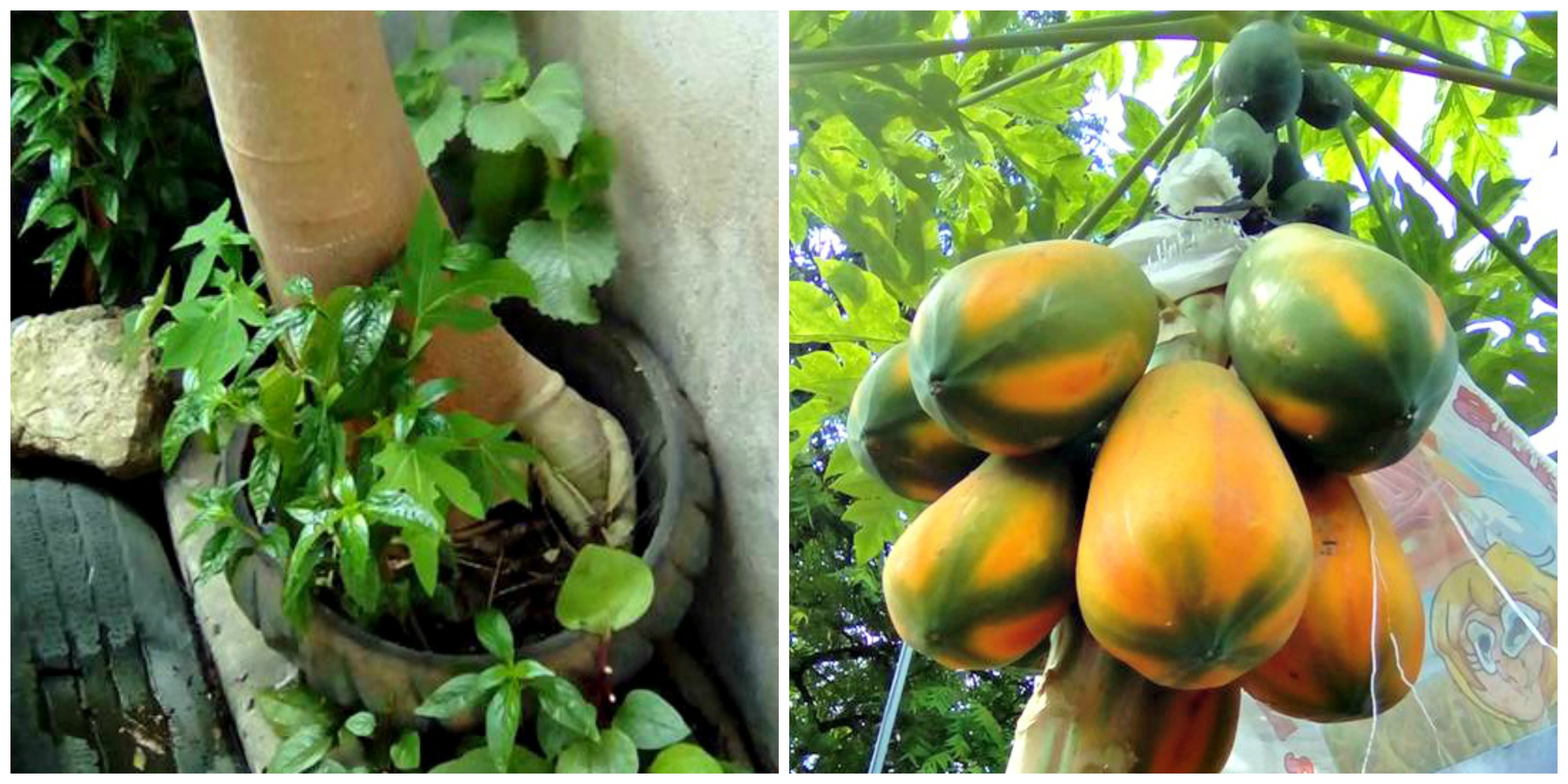
“Homegrown Papaya”
Below is their account how they grew papaya, as taken from Home Farmers Club (Urban Container Gardening Enthusiasts), a Facebook group.
My father scattered seeds, from the papaya fruit that we ate, in a pot. After a few days, I saw some seedlings. When the seedlings grew bigger, my father planted them in a pot. Although it is in a pot, the roots started growing out of it when it grew bigger. The pot is made out of a rubber car tire. It started fruiting last February, and the fruits ripened in May. It’s not been a year yet, and it grew that tall with many fruits. We are in Taguig, Metro Manila, the Philippines.
The pot is not big enough for the papaya, hence the roots grew out of the pot, and grew in the soil. Their soil must be healthy, hence the tree grew well, even without fertilizer. Of course, the Philippines has a suitable climate for papaya, which makes planting and growing relatively easy. Their papaya fruits are wonderful!
Case 3: Jose Alexander Banares
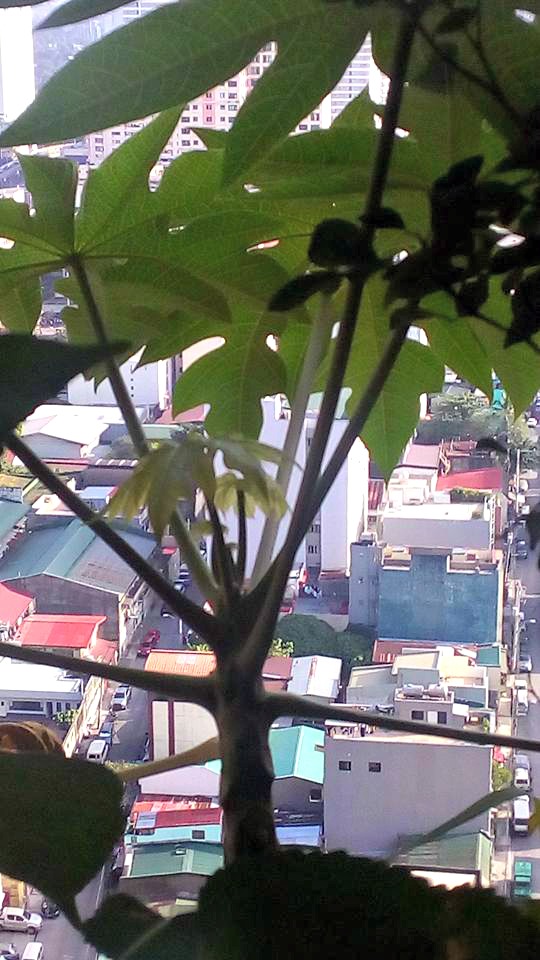
Mr. Banares used the Red Lady variety. He bought a sack of garden soil and mixed it with compost in a discarded plastic cabinet about 12 inches in height and about 3×4 feet width and length. His real challenge is pollination as with that height, bees and butterflies are so rare. He won’t be able to hand pollinate, as it is very dangerous to go on the ledge.
Location is the Philippines.
Personally, I love the author’s effort to grow papaya, even at a 1.5 sqm ledge in 28th floor. Quite admirable! I do hope that the author does get fruits later on. I hope the papaya turns out to be bisexual, and that the wind handle the pollination.
Case 4: Rosemarie Lacson
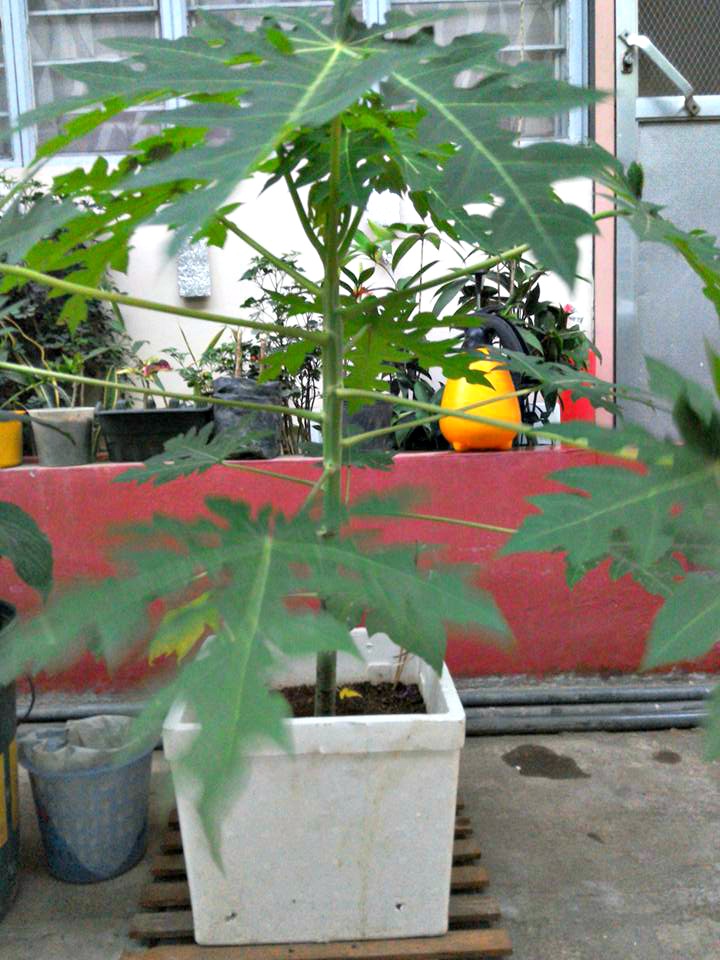
Below is an account how she grew papaya, as taken from Home Farmers Club (Urban Container Gardening Enthusiasts), a Facebook group.
Ms. Lacson planted papaya in a recycled square container 12″ x 12″ container. When she transferred the papaya tree in a sunnier location, the tree died. She accounts the small container, and resulting lack in nutrition form soil, as the reason why the papaya tree died.
Location is the Philippines.
I do hope that this is not the last time that the author attempts to grow papaya in container. Next time, she knows that it has to be a bigger container (at least 2 feet x 3 feet). Her papaya was really looking well!
Case 5: Sbn Soy Bona
Below is a picture of papaya in pot, as taken from Home Farmers Club (Urban Container Gardening Enthusiasts), a Facebook group.
Location is Cambodia.
Based on the picture of the fruits above, it looks like the papaya plant is hermaphrodite. I hope that the author has already harvested a fruit by now. I do wish, however, that he’d plant the next one in a bigger pot. Beyond that, he’s certainly caring for his plants quite well.
Case 6: Gilles & Co.
In the video (published in September 2015), papaya is 6 months old. One year into its growth, the author said that “they’ve grown nicely until winter came and I think they didn’t had enough light and dropped unripe. But the plant is still going so I’m hoping for fruits to come this season.”
Location is United Kingdom.
The author’s effort to grow papaya in such cold condition is admirable. I do wish that his papaya tree will finally bear fruit!
Case 7: My own experience
-
- I’ve been growing papaya in my garden (not in containers) since 2012.
-
- Our first papaya died after the storm when the area got flooded. UF/IFAS documents that “Some fruit trees such as avocado and papaya may not withstand more than a day or two of saturated or flooded soil conditions.”
-
- At the same time, seedlings will die when it is very hot. The past months of April and May 2017 were very hot, with temperature going up to 34C. What saved me was mulching. I covered the ground around the papaya seedling with dried grass. Also, I watered it once daily, and if it wasn’t enough, I watered it twice: once in the morning and another in the afternoon.
-
- Currently, I have 12 papaya growing in the garden and in the neighboring lot, 10 of which are in the ground, while 2 are in containers. Here’s the biggest of them, with some small fruits.
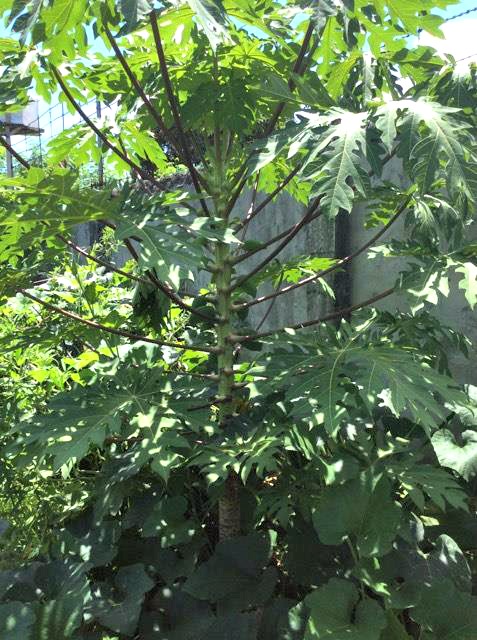
- Currently, I have 12 papaya growing in the garden and in the neighboring lot, 10 of which are in the ground, while 2 are in containers. Here’s the biggest of them, with some small fruits.
-
- The most interesting for me, for the benefit of this blog, is the one in the container. Since I compost my kitchen waste (including papaya peels and seeds) and feed them to the compost worms, some of the seeds that got mixed in vermicompost germinated in my pots.
-
- Although it is growing in a medium-sized pot, it is growing with the rose apple.
-
- I know that the papaya and rose apple will compete for the nutrients. Without the rose apple, I’m confident that this papaya will bear fruits.
-
- At the same time, I’m worried that having 2 trees in 1 pot will break the pot.
- Hence, I will transplant this papaya into another large pot. I will keep this blog updated regarding the progress of the papaya in the pot.
I’m quite excited for my 12 papaya seedlings/trees. I hope they all survive the rainy months. Since I’ve read the authoritative materials and watched other gardeners grow their papayas, I will certainly apply what I’ve learned.
Once you’ve decided to plant papaya, you can, of course, get seeds from the fruit itself. Otherwise, you could message me if you’d like papaya seeds. I’m not selling yet as I’m still testing the process and market; just pay for shipping. Otherwise, you could get these papaya seeds from Thailand, with 4.5 star score (high score), although with 2 reviews yet. Kindly note disclosure with Amazon.
By the way, we really do love eating fresh and cooked papaya in our dishes, sidings, desserts, and drinks, such as the nectar below.
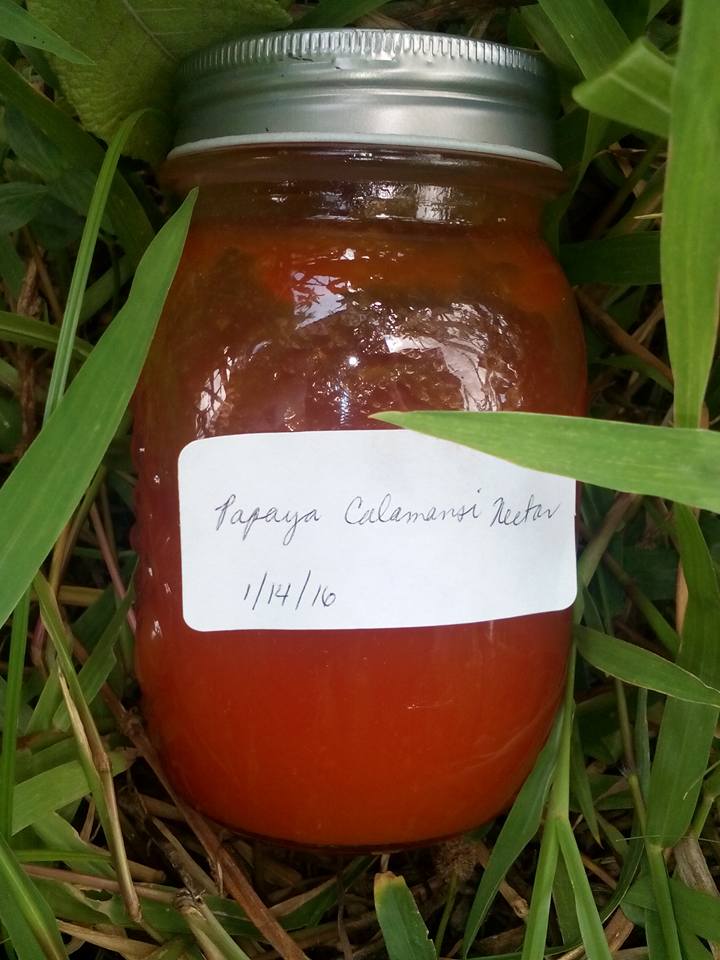
I pray for a bountiful harvest and enjoy all the Vitamin A and anti-oxidants we can get from this lovely tropical fruit.
In conclusion, we’ve learned how to grow papaya from authoritative experts, as well as we’ve seen gardeners who grew papaya in containers, with different levels of success. In short, growing papaya in containers is really doable wherever we are! Let’s apply what we’ve read, and continue to plant, so we learn as we go along.
Let’s keep on growing vegetables in containers. Good luck to us!
============================================================================

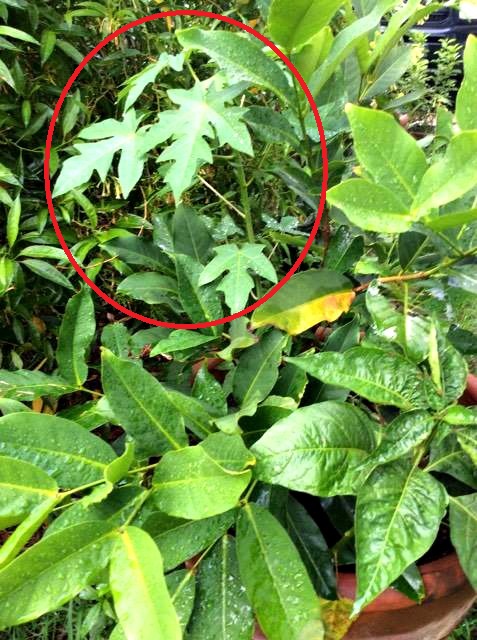



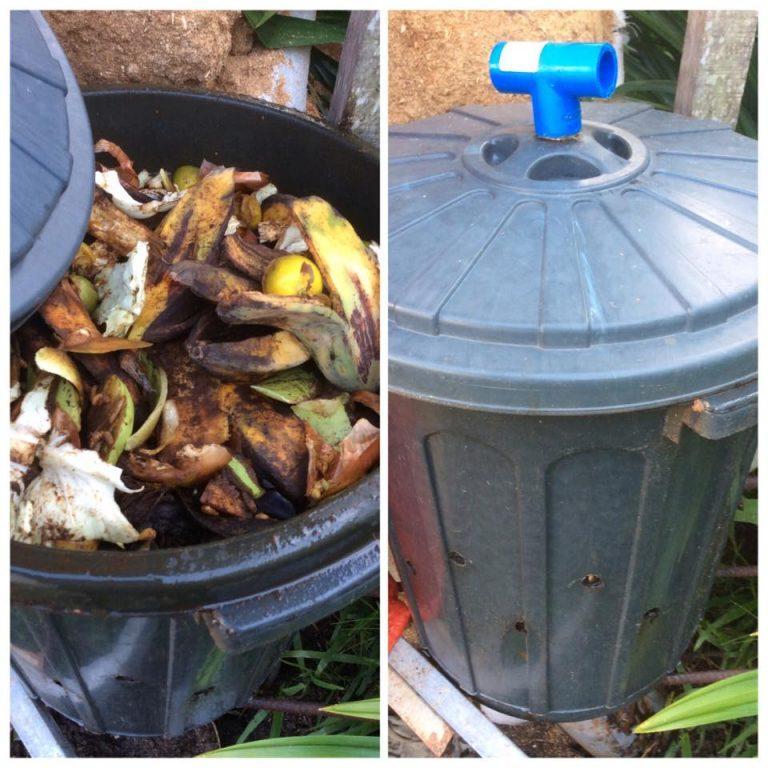
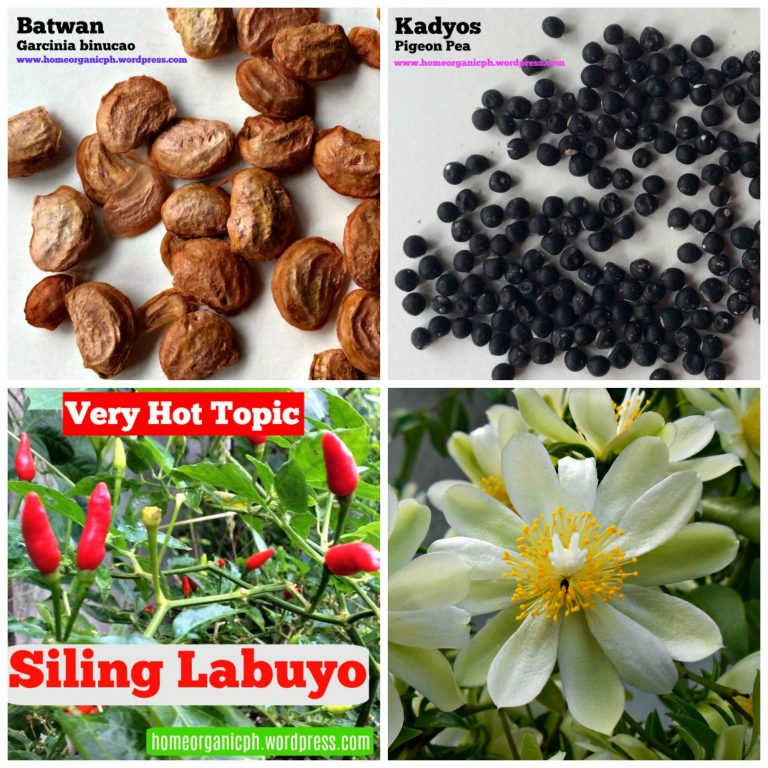
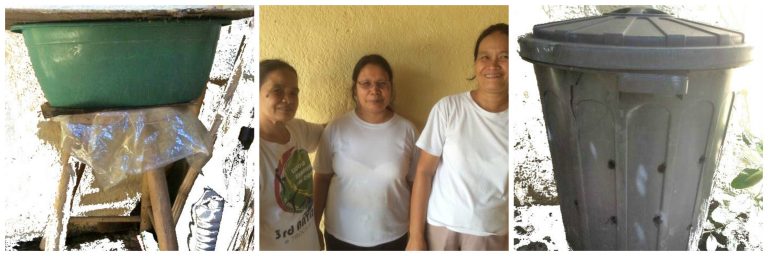
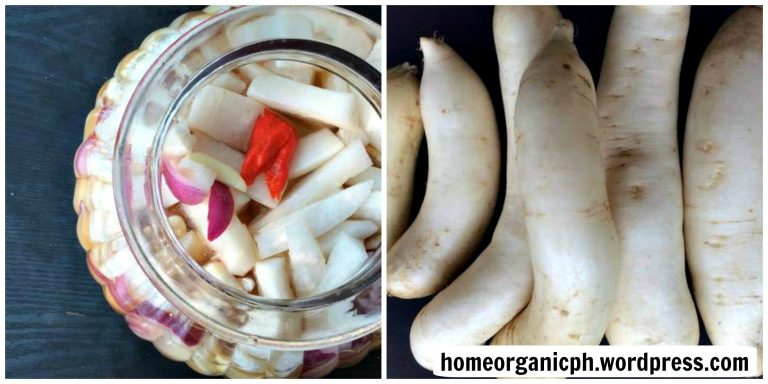

Would love to grow these one day (Im in the UK) but you should try your best to get hold of Tamarillo seeds, I have a plant in a pot but it has never done anything because I have young kids who keep destroying plants so it is high on a small windowsill, in a year or two I plan on re-potting it in a much larger pot so it can sit on the ground, I believe these will do very well in Phil’s. They are grown in the Sub-Tropics mostly that I have seen but are frost tender so sometimes in those climates they can fall ill to the colder weather.
Thank you for your input, Jeff. I’ll look for tamarillo seed/seedling. I do have miracle berry in my garden, although it is yet very small. Miracle berry and tamarillo look sort of the same, but, yes, they belong to different families.
no prob’s 🙂